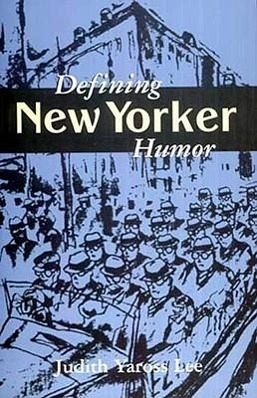
Later this month, Judith Yaross Lee will once again bring Shermund’s work to the forefront as she speaks on “The Humor of The New Yorker Magazine” at DACO. Lee, Ohio University Distinguished Professor Emerita of Communication Studies, will host the lecture at 2 p.m. March 29. Cost is $8 for the public and $5 for members prepaid, or $10 at the door. The event will give participants the opportunity to learn how the covers, spot drawings and cartoons by Shermund and her contemporaries brought Ross’s editorial vision to life.
Lee recently answered our questions about the New Yorker and Shermund’s role in it.
How did Barbara Shermund's work fit into the New Yorker at the time in which they were published? Shermund’s art had three qualities that founding editor Harold Ross and art editor Rea Irvin sought for the new magazine: humor, sophistication and social relevance. The stylish women and men she drew exuded sophistication themselves, partly because her clean, efficient lines matched her subjects’ elegance, and she flattered her readers by playing with their expectations regarding social norms, especially gendered behavior, at a time when educated white women were staking out modern, independent roles in American society.
How was her work received at that time in our history? The best evidence of her success is that the New Yorker not only bought her original comic ideas for cartoons and covers, but also assigned her to illustrate service departments such as film and shopping reviews, and sprinkled her smaller drawings across the magazine’s pages as “spots.” Her work appeared in the magazine more than 300 times in its first five years—an average of more than once per issue.
Why was her work so important at that time, and how has it transcended generations? Her strong feminist sensibility and her ability to capture the gender politics of her generation and time stood out among the many other artists, both male and female, who contributed to the magazine in the 1920s; the questions she raised about sexual relationships, especially male-female power dynamics, remain relevant today.
What drew you to her work and why was her work and story important to share in your book, Defining New Yorker Humor? When I began my research in 1991, I was startled to discover how many women had contributed to the early New Yorker, because no tables of contents existed for the magazine at that point in its history, and the limited research until then was based primarily on memoirs by men, such as James Thurber, who told stories about their colleagues and friends. What studies of the magazine’s literary humor existed so emphasized the misogyny of Thurber’s stories that the whole magazine had developed a reputation as a masculine domain. In this context, the feminism and contemporary sensibility of Shermund’s work stood out all the more, even among the other women artists whose work I recovered and admired, such as Helen Hokinson and Alice Harvey.
Register today to learn more at The Humor of the New Yorker magazine with Judith Yaross Lee at DACO at 2 p.m. on March 29: https://tinyurl.com/humorofthenewyorker

 RSS Feed
RSS Feed